Ranking the NBA's biggest off-season moves of past 15 years

OAKLAND, Calif. — Warriors fans got a sneak peek at this summer’s biggest blockbuster Tuesday, when Kevin Durant and USA Basketball rolled through Oracle Arena for a blowout exhibition win over China. Durant, the face of the National Team, seized the “Biggest Move of the Summer” title when he announced his decision to leave Oklahoma City for Golden State earlier this month.
To some, including some rival owners it seems, the momentous move was unfair: How can a 73-win team that reached the last two Finals add a 27-year-old MVP? How can the NBA’s most efficient offense add a three-time scoring champion? How can a starting lineup that sports three All-Stars and All-NBA selections in their primes plug its biggest hole by adding a fourth?
There’s no doubt that Durant choosing the Warriors was the defining move of the 2016 off-season. But how does it stack up to other off-season blockbusters in recent memory?
Here’s SI.com’s rundown of the 15 biggest off-season moves of the past 15 years.
A few quick notes:
1. These moves were judged first by how big they were at the time they happened.
2. A player’s age, per-game stats, advanced stats (Player Efficiency Rating and Win Shares) and awards (MVP, All-NBA, etc.) the season before the move were weighed heavily in the ranking.
3. The result and aftermath of the moves was then a secondary consideration.
4. A player’s stats and his team’s ability to advance to the playoffs (immediately and for multiple years afterward) after the move were also considered.
5. Only off-season trades and signings were considered; midseason trades (like Carmelo Anthony to the Knicks) were not eligible.
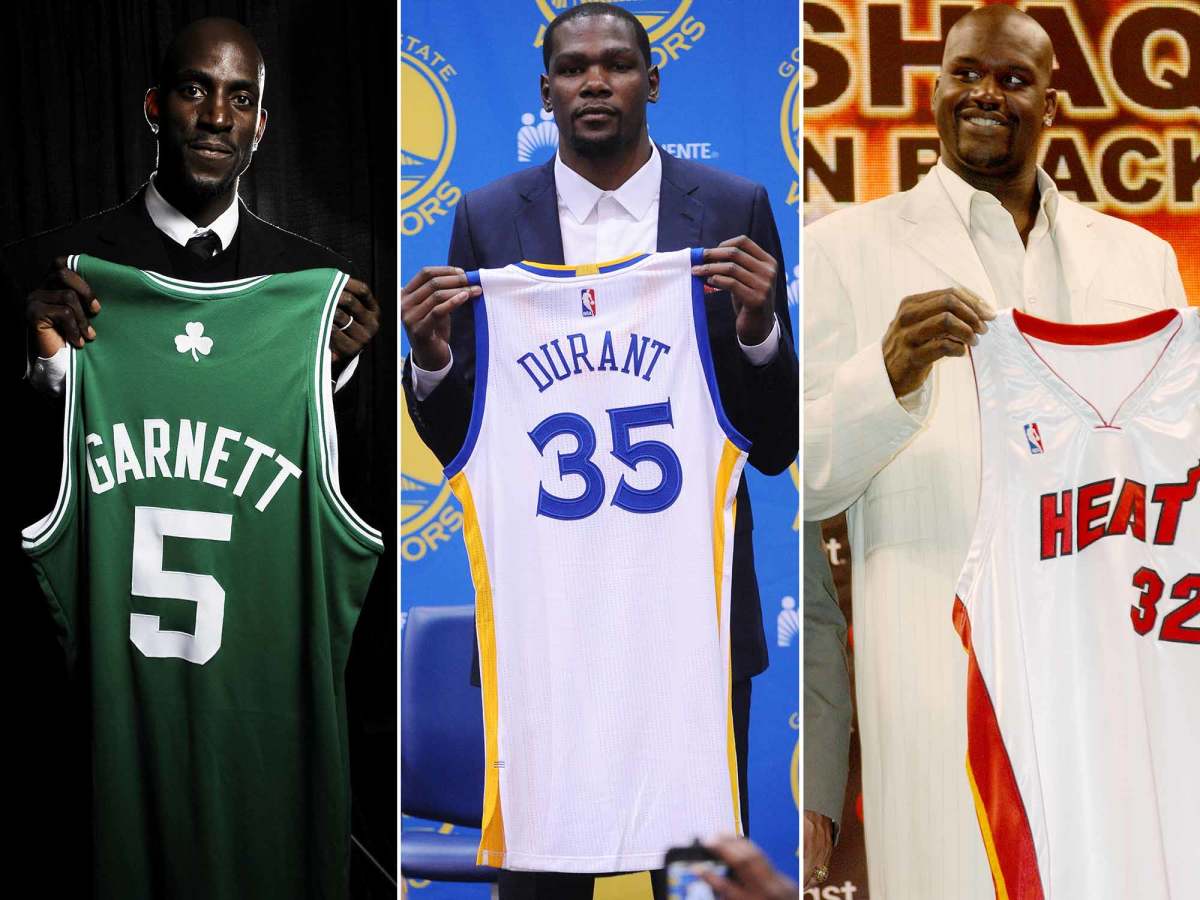
15. Andrew Bynum: From the Lakers to the Sixers, 2012
This is the blockbuster that history forgot. Although Bynum wasn’t even the headliner of the four-team deal that sent him from L.A. to Philadelphia (thanks to Dwight Howard), he was a 24-year-old center with two rings coming off of a career year in which he averaged 19/11 and earned All-NBA Second Team honors. Unfortunately for the Sixers, who traded a horde of assets to land their new franchise big man, Bynum’s career rolled into the gutter and he never even suited up in Philadelphia.
After attempting brief comebacks with the Cavaliers and Pacers, Bynum is a 28-year-old retiree. The repercussions of Bynum’s catastrophic fall-off were immense: Philadelphia entered a prolonged, tank-fueled funk, winning just 81 games combined over the next four seasons. Thankfully, No. 1 overall pick Ben Simmons is (finally) here to save the day.
• Unlocking the mind of Ben Simmons | Summer League: Winners and losers
14. LaMarcus Aldridge: From the Blazers to the Spurs, 2015
The biggest move of last summer paid off splendidly, until it didn’t. Following nine seasons in Portland where he evolved from supporting piece to go-to guy, Aldridge split with Damian Lillard to join the NBA’s most consistent contender. While Aldridge’s individual statistics predictably took a hit thanks to a lighter workload, he played for the best team of his career (67 wins), found a fit in between Tim Duncan and Kawhi Leonard on the NBA’s best defense, earned All-NBA Second Team honors, and advanced in the postseason for just the second time during his 10-year career.
One year later, this one has lost a little bit of its luster as it has been overshadowed by Golden State’s massive summer and undercut by Duncan’s retirement. A disappointing second-round loss to the Thunder didn’t help, either. Still, the Aldridge addition gives Popovich and company a strong talent base as it plunges forward into the post-Duncan era. The Spurs might not be the Spurs without the Big Fundamental, but they won’t fall off the map thanks to the Leonard/Aldridge pairing.
13. Kevin Love: From the Timberwolves to the Cavaliers, 2014
Solely from an advanced stats standpoint, Love’s move from Minnesota to Cleveland actually checks in as the fourth-biggest move of the last 15 years. When the Timberwolves dealt their All-Star power forward to the Cavaliers for No. 1 overall picks Andrew Wiggins and Anthony Bennett, the 25-year-old Love was coming off a 26/13 season that placed him among the league leaders in PER (26.9) and Win Shares (14.3).
Since then, Love’s tenure in Cleveland has largely been marked by sacrifice and criticism: his minutes, scoring, touches and rebounding all dipped as he settled into life as a third wheel, and his defensive limitations and health concerns have been put under the magnifying glass. Nevertheless, Love cashed in with a max contract last summer and found ways to contribute to the Cavaliers’ 2016 championship team despite a shaky Finals. Going forward, Love will be a central piece in Cleveland’s title defense and he may evolve into a key trade chip down the road if the Cavaliers are forced to shake up their core to keep pace with the Warriors’ new Superteam.
• See all of Sports Illustrated’s Rio 2016 coverage | Men’s basketball preview
12. Ray Allen: From the SuperSonics to the Celtics, 2007
Younger fans remember Allen as the ultra-high efficient shooting specialist on the Heat title teams. Before he slid into that role late in his career, Jesus Shuttlesworth was one of two major 2007 off-season additions that opened the championship window wide for the Celtics. Let’s not forget: in the season before he was traded from Seattle to Boston, a 31-year-old Allen averaged 26/5/4 on his way to his seventh All-Star selection.
Danny Ainge was able to pair Allen with established stars Paul Pierce and Kevin Garnett (see below) because Seattle’s promising young GM, Sam Presti, was ready to pursue a youth movement built around two top five picks (No. 2 Kevin Durant and No. 5 Jeff Green). Boston’s new veteran-heavy, win-now roster delivered on the off-season hype, winning 66 games en route to the 2008 championship. The Pierce/Garnett/Allen/Rajon Rondo core made two trips to the Finals, three trips to the Eastern Conference finals and five straight postseason trips before Allen bolted for South Beach in 2012.
11. Chris Bosh: From the Raptors to the Heat, 2010
As with Love, Bosh made a calculated decision to leave his job as Toronto’s No. 1 option to sign on as the No. 3 guy behind LeBron James and Dwyane Wade in Miami’s new-look “Big 3.” In the years that followed, Bosh took all sorts of abuse from the anti-Heatles crowd, which unfortunately fixated on his diminished rebounding numbers, his physical appearance and his supposed softness. It’s easy to forget, given all that vitriol, that Bosh, 25 at the time, averaged 24/11 and posted monster advanced stats (25 PER, 9.6 Win Shares) in his final season with the Raptors.
Ultimately, Bosh came out on top: he made four straight Finals trips and won two titles before James left, only to parlay that success into a max contract to remain in Miami. Bosh has earned All-Stars honors in each of the six seasons since he left Toronto, and he’s emerged as a prototypical modern big man thanks to his three-point range and defensive versatility. It’s not clear when or if Bosh will be able to return to the court after dealing with blood clots last season, but his place in NBA history and his Hall of Fame reputation are already sealed.
• Column: Pat Riley toes a thin line between winning and misery
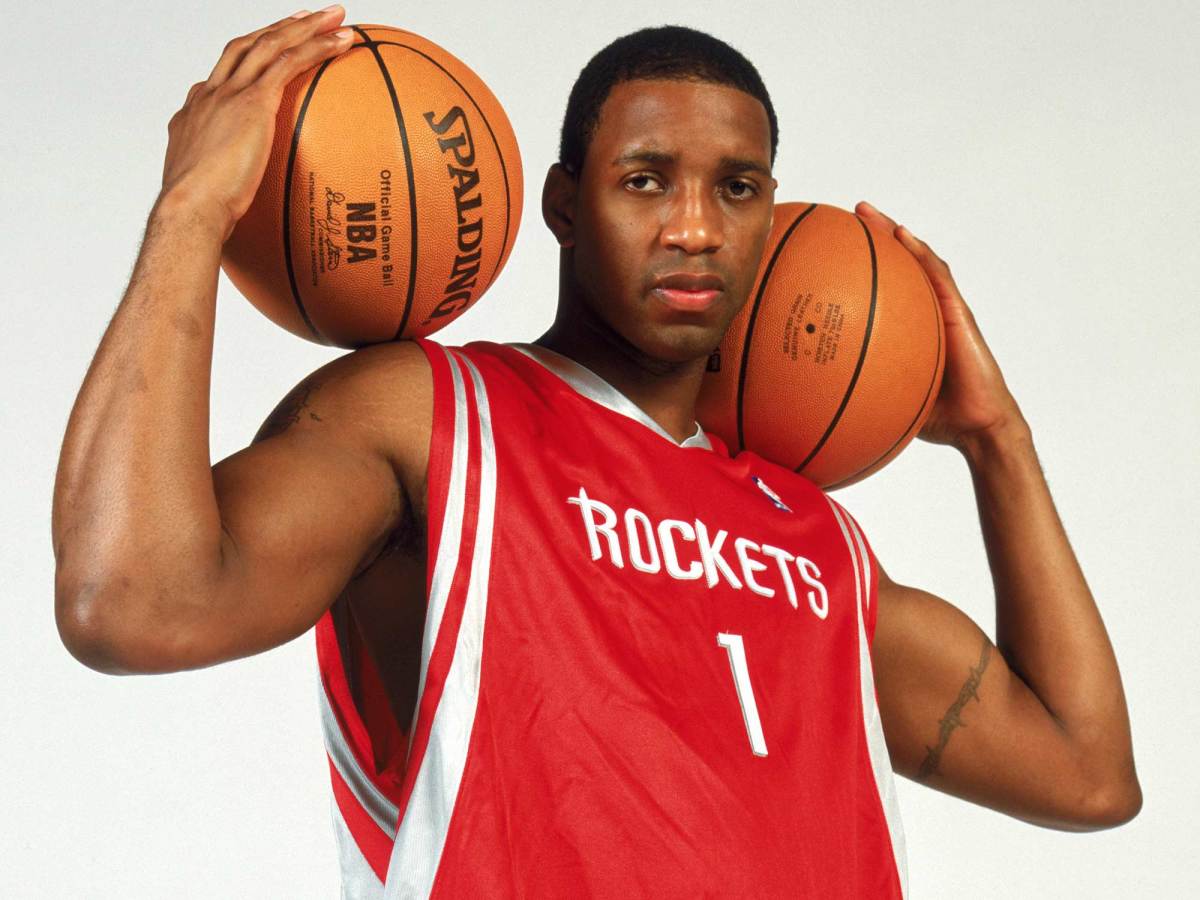
10. Tracy McGrady: From the Magic to the Rockets, 2004
This one ranks high on the “What could have been” scale. When McGrady was dealt by Orlando to Houston for a return package headlined by Steve Francis, he was coming off two consecutive scoring titles and a 2003–04 season in which he averaged 28/6/6 while posting a 25.3 PER. Still just 24, McGrady already had four All-Star and four All-NBA selections under his belt, and he looked poised to spend the next decade dueling with Kobe Bryant for NBA supremacy.
Instead, it was all downhill from there. McGrady went on to three more All-Star seasons in Houston, but injuries and a string of one-and-out playoff appearances kept him from reaching his potential as an all-time great.
9. Dwight Howard: From the Magic to the Lakers, 2012
Lakers fans, still dismayed and/or outraged and/or annoyed by how Howard’s one-year tenure in L.A. unfolded, will likely argue that he doesn’t belong on this list at all. Excluding Howard would be an unforgivable act of revisionism. When L.A. swung a four-way deal to land Howard from Orlando, he was 26 and coming off of a 21/15 season in which he led the NBA in rebounding and earned All-NBA First Team and All-Defensive First Team honors. While injuries had cut short that season, Howard was still a three-time Defensive Player of the Year and MVP candidate heading into what should have been his prime years, and he was joining a Lakers team that was only two years removed from winning the 2010 title.
The anticipated transition of power from Kobe Bryant to Howard never materialized, and the latter bailed for Houston as a free agent the very next summer before succumbing to career-altering injuries. Years of “Dwightmare” hype culminated in a fit so poor that Howard’s reputation never recovered. And for the Lakers, the entire experience was a humbling setback that, coupled with Bryant’s injury-related and age-related decline, sent the franchise into a tailspin that continues to this day. Instead of extending the Lakers’ championship window, the failed Bryant/Howard pairing smashed it into 10,000 little pieces.
8. James Harden: From the Thunder to the Rockets, 2012
Oklahoma City’s decision to trade Harden to Houston for a package that included Kevin Martin, Jeremy Lamb and multiple draft picks was a big deal at the time, but it's bloomed into a gigantic deal in the four years since. Unwilling to offer Harden, then 22, a max rookie extension due to the threat of luxury taxes, the Thunder parted with the reigning Sixth Man of the Year after he posted 17/4/4 off the bench.
In a matter of days, it became clear that Harden was ready to carry the Rockets offense by himself and he’s averaged 25+ PPG, earned four straight All-Star trips, and renegotiated a max contract extension during his Houston tenure. There have been ups (an unexpected trip to the 2015 Western Conference finals, a second-place MVP finish in 2015) and downs (countless YouTube mixtapes of his defensive mistakes, a disappointing first-round exit in 2016, a failed pairing with Howard) along the way, but Harden has given the Rockets an A-list foundation to build around for the foreseeable future.
As for the Thunder, critics will fairly or unfairly point to the Harden trade as the beginning of the end. Could Durant, Harden and Russell Westbrook have coexisted as they all entered their primes? Maybe, maybe not. But, man, it would have been nice to have had the chance to watch it unfold.
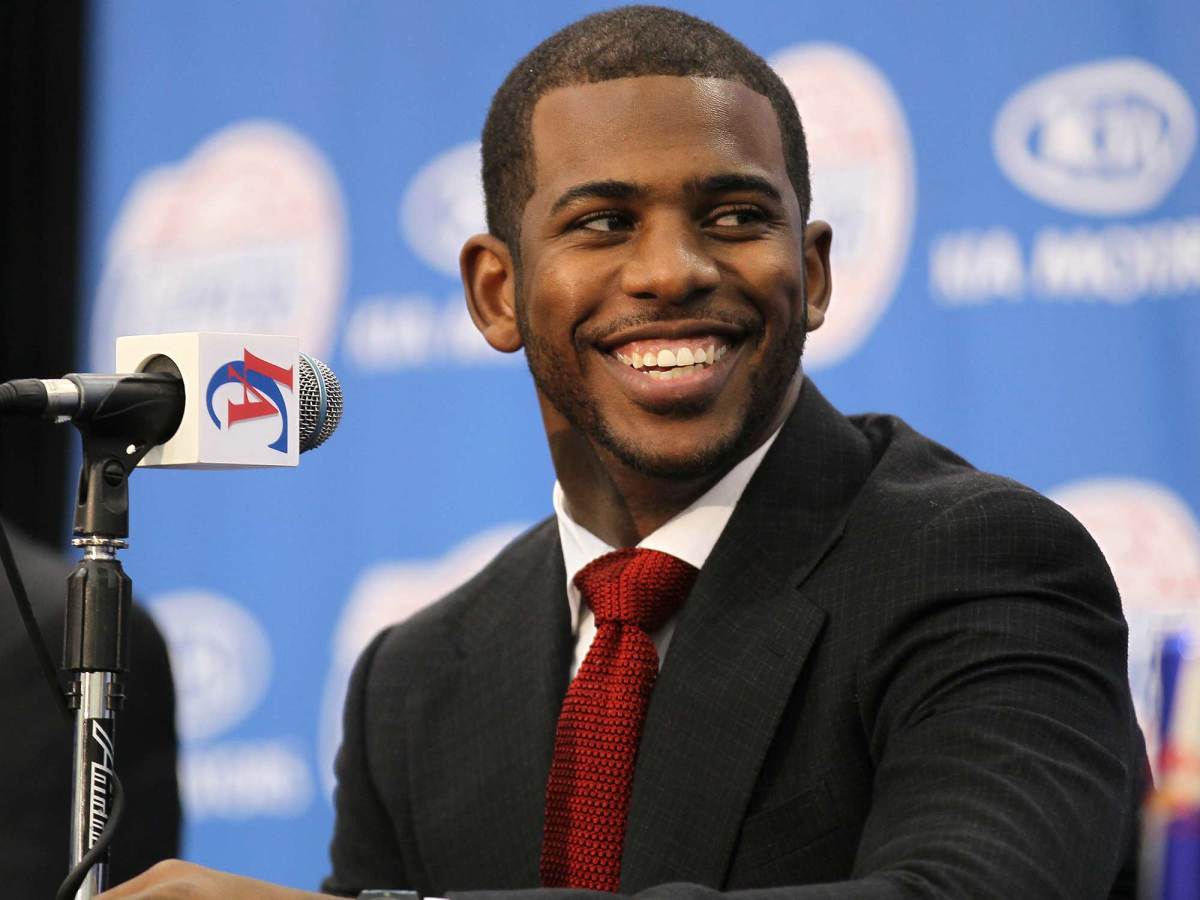
7. Chris Paul: From the Hornets to the Clippers, 2011
NBA commissioner David Stern, acting as the decision-maker for the league-owned New Orleans Hornets (pre-Pelicans), infamously argued that “Basketball reasons” led him to nix a three-way trade that would have sent Paul to the Lakers. Instead, Stern and the then-Hornets landed Eric Gordon, Al-Farouq Aminu, Chris Kaman and a first-round pick in New Orleans. That young core never flourished, and Stern was only saved from years of nonstop ridicule when the franchise landed the right to draft Anthony Davis with the No. 1 overall pick in 2012. (Conspiracy theorists won’t let the league forget this one...)
Paul’s arrival in L.A. completely turned the Clippers franchise around. Teaming with Blake Griffin and DeAndre Jordan to form the entertaining “Lob City” core, Paul has led the Clippers to their five most successful seasons in franchise history during his five-year tenure. The future Hall of Fame point guard arrived in L.A. at age 25 following a strong season (16/10, 23.7 PER, 9.5 Win Shares) and has maintained an All-NBA/All-Star/MVP candidate level of play under multiple coaches and without much second-unit help. Of course, there is one obvious shortcoming: Paul hasn’t yet gotten over the hump and advanced to the conference finals and his postseason career has been marked by untimely moments of frustration.
6. Steve Nash: From the Mavericks to the Suns, 2004
Mavericks owner Mark Cuban has made it clear that he regrets his decision to let Nash sign a four-year, $66 million contract with the Suns in 2004, and for good reason. At the time, Nash was a 29-year-old two-time All-Star with strong, but unspectacular, numbers (he averaged 15/9 in his final season with Dallas).
In Phoenix, Nash blossomed into the engine behind the vaunted “Seven Seconds or Less” offense, winning back-to-back MVPs, earning six All-Star nods, leading the NBA in assists five teams, guiding Phoenix to the conference finals three times and heading up the NBA’s most efficient offense every year from 2005 to ’10. While Nash never led the Suns to the Finals, much less a title, Cuban recovered to construct a title team around Dirk Nowitzki in 2011. But that success only begged the question: How many championships could Nowitzki and Nash won had they remained together?
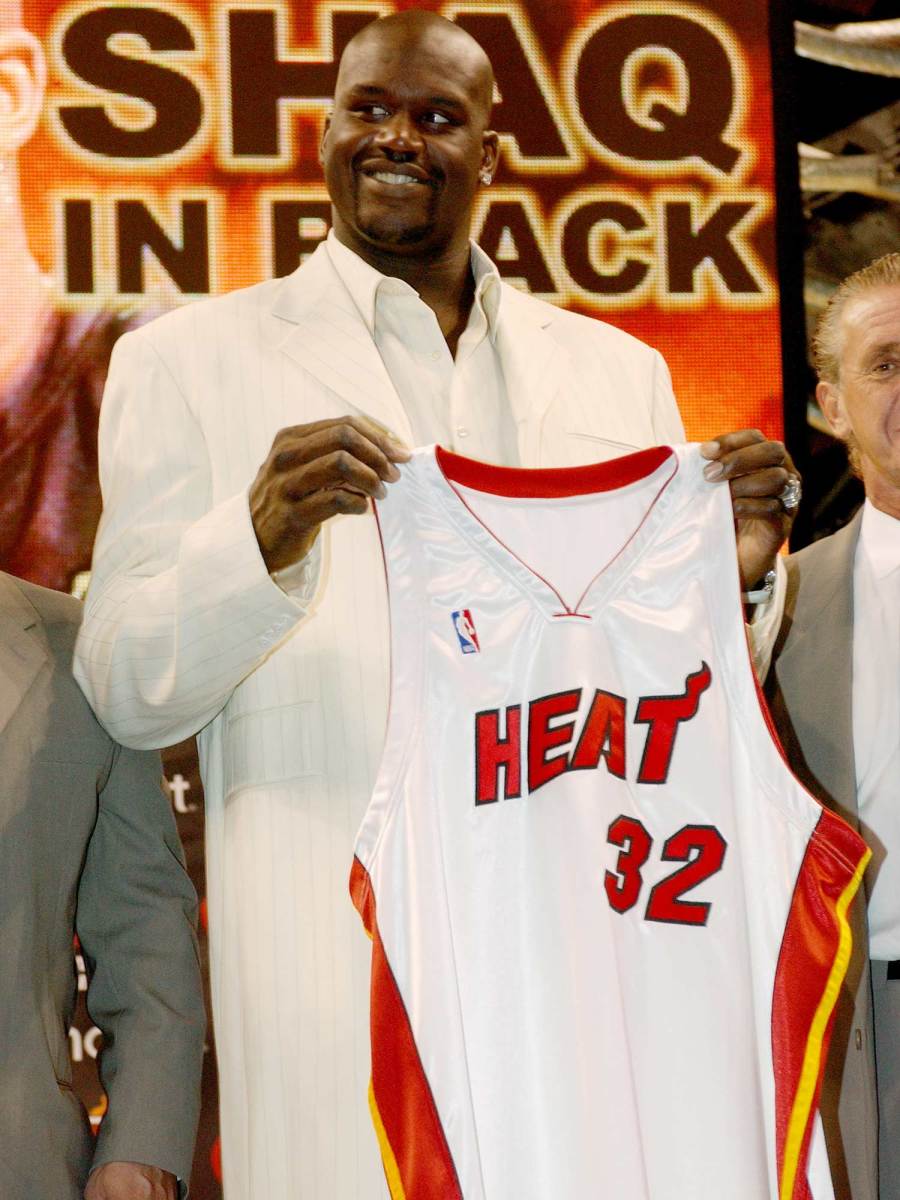
5. Shaquille O’Neal: From the Lakers to the Heat, 2004
To be clear, the true blockbuster move of O’Neal’s career came in 1996, when he fled the small-market Magic for the Hollywood glitz-and-glamour of the Lakers. That cross-country free agency trek led to a partnership with Kobe Bryant that produced a three-peat—and plenty of harsh feelings along the way. While that decision took place before the timeframe covered in this list, O’Neal’s 2004 return trip to Florida still fares quite well on the impact scale.
With Lakers ownership and management taking Bryant’s side in the divorce, O’Neal was shipped to Miami in a trade package that returned Lamar Odom, Caron Butler, Brian Grant and multiple picks. At the time of the move, O’Neal was 31 years old and just two years removed from winning his third Finals MVP award. His numbers (22/12) and advanced stats (24.4 PER and 9.9 Win Shares) were good enough to land him on the All-NBA First Team, but slightly off his peak performance. O’Neal would spend three seasons in Miami, where he teamed with Dwyane Wade (Michael Corleone to Kobe’s Sonny) to capture the fourth and final title of his career while also earning three All-Star selections and two more All-NBA First Team nods.
The Heat moved on from an aging O’Neal during the 2007–08 season, sending the Hall of Famer toward retirement on a tour that included stops in Phoenix, Cleveland and Boston. Had O’Neal arrived in Miami a year or two earlier or remained productive a year or two longer, he would have made a run at the top spot on this list.
4. Kevin Garnett: From the Timberwolves to the Celtics, 2007
The other half of Danny Ainge’s magical 2007 summer, Garnett arrived in Boston after averaging 22/13 at age 30 in Minnesota. During his 12th season with the Timberwolves, Garnett was named to the All-NBA Third Team and All-Defensive Second Team while also leading the league in rebounding. Long regarded as one of the most competitive players and most effective defenders in the league, KG nevertheless had been unable to lead the Timberwolves to the 2005, 2006 or 2007 playoffs.
Given that the clock was ticking on his prime, Garnett finally OK’d the trade to Boston, who sent back a package that included Al Jefferson, Theo Ratliff, Sebastian Telfair, Gerald Green, Ryan Gomes and two first-round picks. Garnett’s impact is easily seen on both ends of this deal: Minnesota has cycled through six coaches while failing to qualify for the playoffs in the nine years since the trade, while Boston reached the conference finals three times in Garnett’s six years in Beantown. The crowning achievement of Garnett’s Hall of Fame career came in 2008, when he led the Celtics past the rival Lakers in the Finals, capping the series with his signature “Anything is possible!!!!!!!” post-game scream.
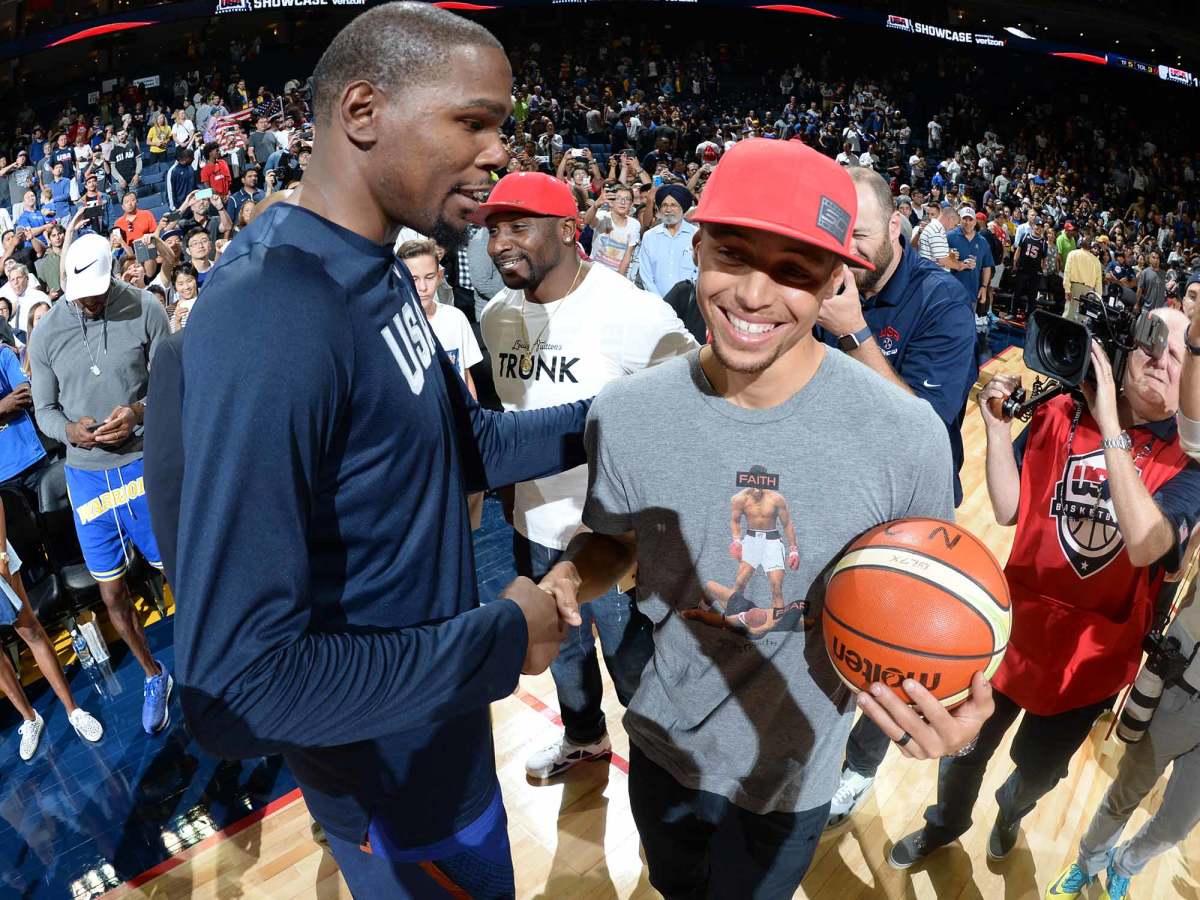
/p>
3. Kevin Durant: From the Thunder to the Warriors, 2016
This is a lofty spot to place Durant, but he and the Warriors have earned it. Unlike Garnett and O’Neal, who were both a year or two removed from their peak statistical production, the 27-year-old Durant will arrive in Golden State smack in the middle of his prime. The sheer talent assembled by GM Bob Myers will likely cause Durant’s numbers to dip next season, but the 2016 playoffs served as a reminder that Durant is no worse than a top-three player in the game.
Much like the 2008 Celtics with Garnett, the Warriors will welcome Durant into a role that virtually guarantees immediate success: one of the league’s most efficient and ruthless scorers will join an offensive system that generates easy looks for its star players through pace, ball movement and superb spacing. After spending years bogged down in iso-heavy systems with sub-par supporting casts in Oklahoma City, Durant should be free to play the most effective basketball of his career.
• Kevin Durant gets first taste of Warriors life in Team USA’s Oracle rout
There are two other factors that compound the excitement with this move: 1) Golden State, already supreme, has consolidated its power at the top of the Western Conference this summer, and 2) Golden State’s core is aligned age-wise so that its championship window extends into the distant future. With the Spurs, Thunder and Clippers taking a step back this summer, the Warriors, on paper, are set up to dominate the West just as the Heat dominated the East during the “Big 3” era. And with Durant, Curry, Klay Thompson and Draymond Green all 28-and-under, the Warriors should enjoy an extended run of 60+ win seasons, like a souped-up version of Nash’s Suns or Garnett’s Celtics.
What’s truly scary is Golden State’s long-term ceiling. Coming off a scintillating 2015 title and a 73-win season in 2016, the Warriors have every reason to dream about becoming a “dynasty,” a word they’ve thrown around a little bit this summer. It’s not ludicrous to suggest that Golden State, with good health, could win the next three or four titles. If that happens, Durant’s decision to bolt for the Bay Area could actually move up a spot (or even two!) on this list.
2. LeBron James: From the Heat to the Cavaliers, 2014
Only one player from the last 15 years can top Durant when it comes to shaking up the NBA with his offseason zip code changes: James. And he did it twice.
Why did James’s return to Cleveland rank second to his original Decision on this last? For one, he was coming off of his age-29 season in 2014 rather than his age-25 season in 2010. For two, he has only had two seasons to accumulate awards and accomplishments during his second Cavaliers tenure.
Even so, James’s return to Ohio immediately brought the Cavaliers back to life. After struggling through four lottery seasons without him, James singlehandedly carried an undermanned Cleveland team to the 2015 Finals and then delivered the signature win of his career by pulling the Cavaliers out of a 3–1 hole in the 2016 Finals to deliver the city’s first title in 52 years. There’s no end in sight yet: Cleveland—with its core of James, Love, Kyrie Irving and Tristan Thompson, among others—pencils in as the East’s clear favorites in 2017, and 2018, and 2019, and, and, and.
• I'm Coming Home: LBJ explains Cleveland return in Sports Illustrated essay
While James has started to downshift during the regular seasons, saving his best work for the playoffs, he returned to Cleveland as the NBA’s best player and he showed in June that his best was still better than anyone else’s best. That will almost certainly be the last hurdle for Durant next year: Can he finally topple King James after all these years?
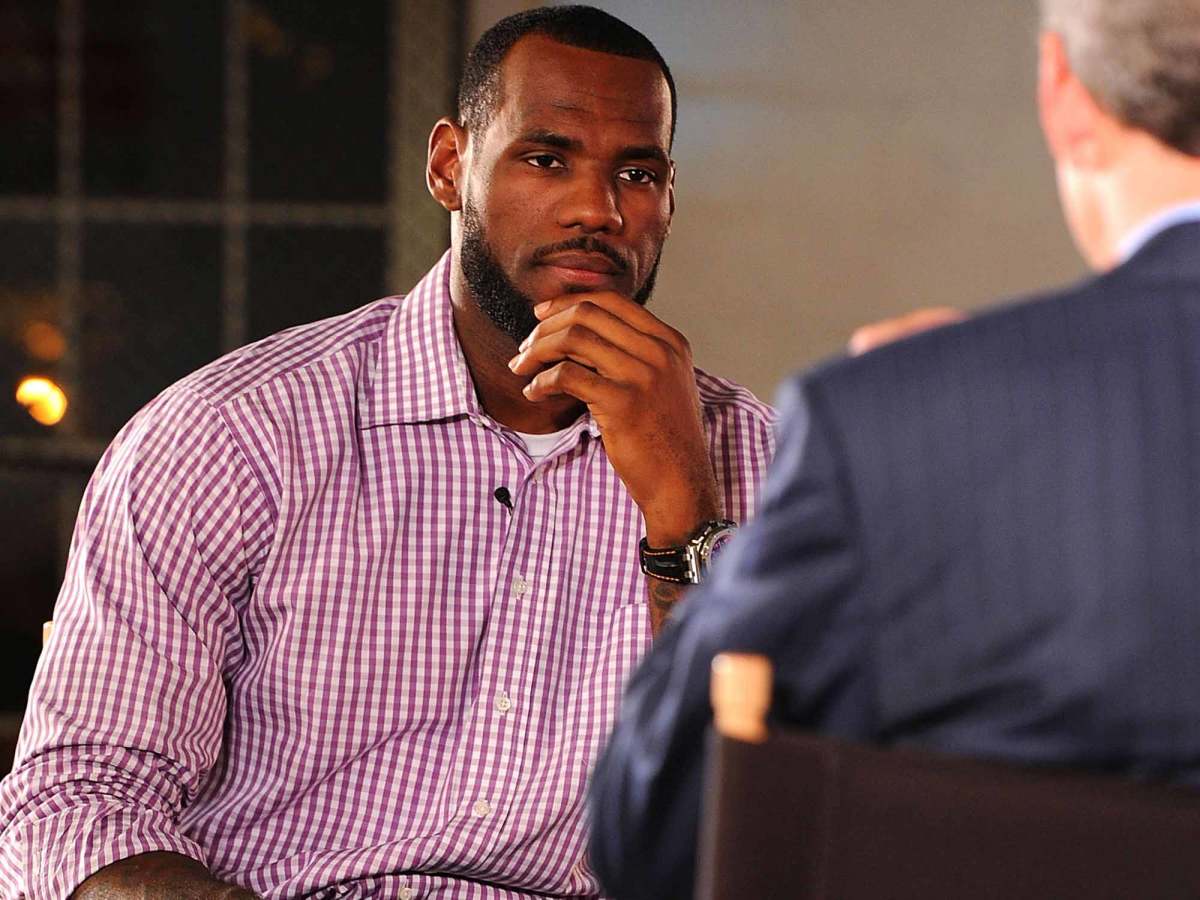
1. LeBron James: From the Cavaliers to the Heat, 2010
The biggest off-season move of the past 15 years was the only one with its own television special hosted by Jim Gray. James surely wishes he could redo the mechanics of “The Decision,” but the actual decision was as sound as it gets. Coming off an MVP season at age 25 in which he led the NBA with a 31.1 PER and 18.5 Win Shares, James took his talents to South Beach, where he teamed up with Dwyane Wade and Chris Bosh to form a fearsome “Big 3.”
The results were immediate: Miami advanced to four straight Finals, winning twice, and James captured two more MVP awards and his first two Finals MVP awards. While his struggles during the 2011 Finals represented one of the low moments of his career, James garnered comparisons to Michael Jordan and sealed his reputation as one of the league’s all-time greats by beating Durant and the Thunder to capture his first title in 2012 and then prevailing over Tim Duncan’s Spurs in an epic 2013 Finals.
The Heat never quite became the dynasty that many observers feared and expected, but that was only because James decided he was ready to head home to Ohio. Had he stayed in Miami, the Heat would be looking forward to their seventh straight Finals trip in 2017 and Wade certainly wouldn’t be suiting up alongside Rajon Rondo in Chicago.
Pat Riley and company learned the hard way that James gives, and James takes away.
Honorable Mention: 2003 Karl Malone, 2003 Gary Payton, 2003 Sam Cassell, 2004 Lamar Odom, 2007 Zach Randolph, 2008 Baron Davis, 2010 Amar’e Stoudemire, 2010 Carlos Boozer, 2010 David Lee, 2011 Tyson Chandler, 2012 Andre Iguodala, 2013 Paul Pierce.
